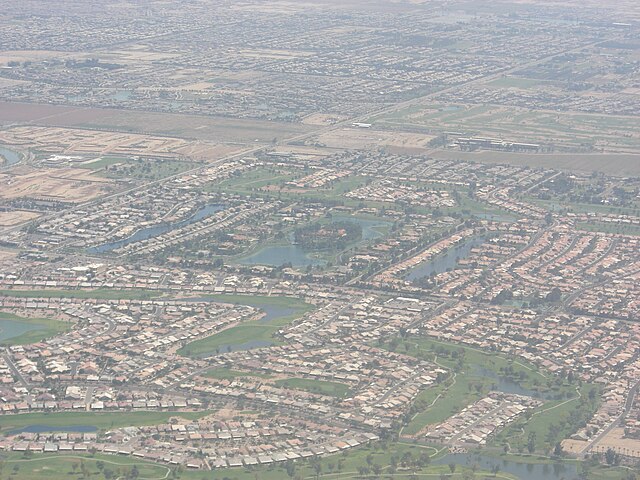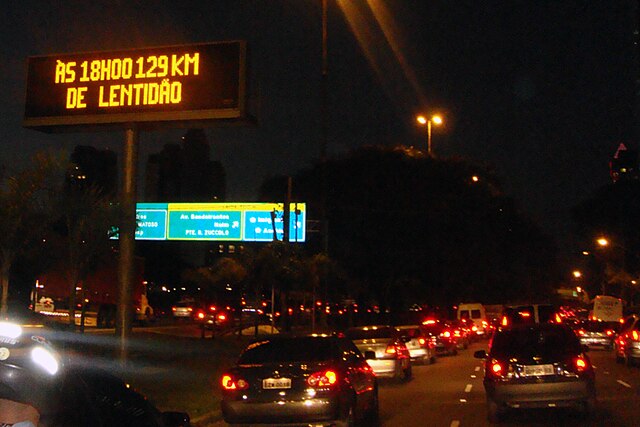Suburbanization (AE), or suburbanisation (BE), is a population shift from historic core cities or rural areas into suburbs, resulting in the formation of (sub)urban sprawl. As a consequence of the movement of households and businesses away from city centers, low-density, peripheral urban areas grow.
A suburban land use pattern in the United States (Colorado Springs, Colorado), showing a mix of residential streets and cul-de-sacs intersected by a four-lane road.
View of a housing development near a farm in Richfield, Minnesota, a suburb of Minneapolis, 1954.
Post-socialist suburbanization in Pitești, Romania.
Urban sprawl is defined as "the spreading of urban developments on undeveloped land near a more or less densely populated city". Urban sprawl has been described as the unrestricted growth in many urban areas of housing, commercial development, and roads over large expanses of land, with little concern for very dense urban planning. Sometimes the urban areas described as the most "sprawling" are the most densely populated. In addition to describing a special form of urbanization, the term also relates to the social and environmental consequences associated with this development. In modern times some suburban areas described as "sprawl" have less detached housing and higher density than the nearby core city. Medieval suburbs suffered from the loss of protection of city walls, before the advent of industrial warfare. Modern disadvantages and costs include increased travel time, transport costs, pollution, and destruction of the countryside. The revenue for building and maintaining urban infrastructure in these areas are gained mostly through property and sales taxes. Most jobs in the US are now located in suburbs generating much of the revenue, although a lack of growth will require higher tax rates.

A typical suburban development in the United States, located in Chandler, Arizona
An urban development in Palma, Mallorca
Despite its reputation for urban sprawl and car culture, Los Angeles is the densest major built-up urban area in the United States.
Traffic congestion in sprawling São Paulo, Brazil, which, according to Time magazine, has the world's worst traffic jams







